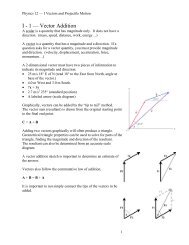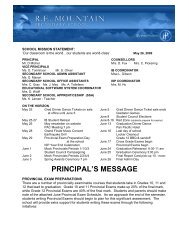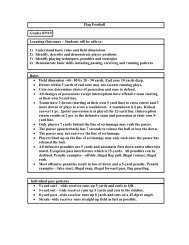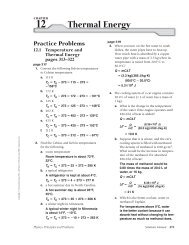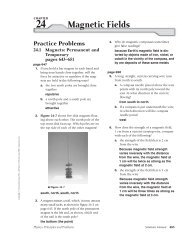You also want an ePaper? Increase the reach of your titles
YUMPU automatically turns print PDFs into web optimized ePapers that Google loves.
Ketone nomenclature: ending of name is changed to “one”.<br />
The position of the C=O is numbered.<br />
The C=O on the end carbon is an aldehyde.<br />
The ending for an aldehyde is “al”. They do not have to be<br />
numbered because the C=O must be on the end carbon.<br />
Propanal, CH3CH2CHO<br />
O<br />
Example 1:<br />
What is C3H6O ?<br />
These are functional group isomers.<br />
The primary acid in organic chemistry is the carboxylic acid.<br />
The ending of the name is changed to “oic acid”. They also do<br />
not need to be numbered, because they must be on the end of<br />
the molecule.<br />
O<br />
Ethanoic Acid, Acetic acid, CH3COOH:<br />
OH<br />
Ketones and Aldehydes have dipoles on the C=O bond. Their<br />
b.p. and m.p. are higher then alkanes; however, they are<br />
usually not very soluble in water.<br />
The carboxylic acid has much higher inter-molecular bonding<br />
because of hydrogen bonding. This also makes many shortchain<br />
carboxylic acid soluble in water.









